Accessorizing Your Canon 1DC for Cinematic Capture: Part 2
Previously we got your Canon 1DC looking like a movie camera and not a DSLR. In this article, our focus is on adding the little bits that energize video village and make the camera focus puller friendly.
Focus pullers are one of your best assets
When you shoot film, you start with a camera that feels nice — good weight, great on your shoulder. Let’s say this baby weighs 35 lbs. All of a sudden, my focus puller gets to that camera, and cine tapes get affixed, brains for remote follow focus, motors, arms, monitors, and now that nice camera that weighed 35 lbs. is trimming out at just under 45 lbs.
All of this is necessary, especially if you take focus pullers to places that I do – t2.0 at night with 3/4” of depth of field and ask for everything to be in focus. I respect their talent so much. Darin Necessary is one of the best. His instincts are incredible. These next few points are how he likes to add the little bits to make his life easier on set.
Adding the “little bits” accessories
The first little bit I would suggest would be a 16×9 Cinelock. I screw this to the right side of the cage.
Make Video Village Happy
Then I add another Cinelock onto the bottom of an Ultralight Arm. You might ask why would I need this. Well, this is the device that will energize Video Village. We are now going to add a TV Logic monitor to this arm that will work on the dummy side of the camera. With its HDMI to SDI converting function, it will send an SDI signal to video village. The signal is one they are familiar with and their gear will recognize it.
🚧 HDMI Port
The Achilles heel of the Canon 1DC is its mini HDMI port, and I have brought this to Canon’s attention. Converting this signal is paramount if you are going to have anyone watch what you’re doing. HDMI cables are delicate, and fragile and do not broadcast long distances without clumsy repeaters.
Top Handle
Moving on to more accessorizing, I would now add a top handle to the cage. This allows you to grab it easily, and operate low-angle shots with, you name it. This baby rocks. Arri, Zacuto, Redrock Micro, Letus, and Element Technica are my favs.


The Letus has a rosetted top handle. It will adjust to any angle. Its locking top plate and clamp give you flexibility along with a mini rod support. Element Technica’s top handle is fixed and bolts directly to the cage with mini rod supports as well.

Mini Rods
Why would I want mini rods on the top of my camera? The mini rods on top of your camera enable you to mount your remote follow focus motors, manual focus, and/or zoom motors easily.
Let’s turn this baby on and off
One of the disadvantages of this DSLR is that there was no solution to remotely turn this camera on or off. Canon made some BlueTooth wireless devices but they do not communicate well. They have a cable method, but it is not wireless and it doesn’t lock.
Forming the relationship with a rental house to bring your vision to life
So many of these little bits cost a lot of money and maybe something that you do not need all the time on your jobs. I look to a rental house that looks forward into the future and figures out all of this stuff for me. One of the places that I use when I shoot Canon are my friends at Revolution Cinema Rentals. Q, Sarah and their kick-ass team of co-collaborators have come up with many of these “LITTLE BITS” so that your camera is production friendly.
When the 1DC could not turn off and on remotely, I turned to them to find a solution. Their device connects through the side port of the camera which talks to the 1DC and enables you to turn it on and off through your remote follow focus system. BAM!!!!
The Power Solution
Ok, we have our camera nicely tricked out to function on a head in studio mode, but how do we power it? The onboard batteries are an option, but you have many other things to power — monitors, remote follow focus, EVFs, etc. I like Anton Bauer batteries, so I have based the power distribution around this. Many people have gotten into the power distro game, like Switronix and Hawk-Woods UK.
Battery Plates
I will start with a Letus battery weight plate to use as an example. The reason I am using this one is that the Letus Gold Plate has four accessory p-tap ports. Anton Bauer has a gold plate that has four ports as well.
Why is this a big deal? I like eliminating variables, and plugging accessories directly into the battery is paramount. When splitter/breakouts are used, it is just another thing to go down and they do go down a lot. They are made of plastic; they overheat and break easily. With the Letus or Anton Bauer gold plates, you have four places to plug in.
We successfully have all our accessories powered, but what about the camera? You can go out and buy some more 1DC batteries, but what if you were able to power this baby with your Anton Bauer? On The Ticket, I built one of these and it was a lifesaver.
This is another place where I turned to Revolution. I asked them, how can we power this up so that all of the accessories and the camera are powered by one source? They went out and built this cool setup that uses the AC adapter dummy battery of the 1DC, then with an extension cable and a box that allows you to power the camera via p-tap, 4pin XLR, or 2-pin Limo. This kicks butt!!!
Let’s convert this baby
Creating a system that can go quickly from studio mode on a head to camera on your shoulder is HUGE!!!! This is what increases your speed. I know that you do not have six 1DCs all sitting around in every configuration. RIGHT? Converting time is lost shots; you are taking scope off of the screen. I have set up a way to transfer quickly from studio to handheld mode.
You need an excellent shoulder rig.
Some of My Favorites:
- Arri
- Zacuto
- Redrock Micro
- Element Technica
- Letus
Let’s use the Element Technica Mantus Rig. The camera snaps into the mini dovetail plate and you are ready to go. This rig is for shooters who like the camera and lens weight out in front of them.
The Letus Shoulder Rig is based on keeping the camera centered on your shoulder and all that is needed is a couple of rosette-based handles and a shoulder pad. The weight is equal in the front and the rear. What I like about this setup is that it feels very much like an Arri 235 35mm camera on your shoulder. That 35 mm camera was my favorite. The 5 lb. weight that holds the Anton Bauer battery can be flown directly behind the camera or flipped over to pinch against your shoulder in the back for steadiness.
Shoulder pads and their comfort
The secret to this little setup is the shoulder pad. Take a look at it. It is a wedge design. Why is that? Well, look at your shoulder. It is not an even surface. It goes down at an angle away from your head.
This wedge design keeps the camera level and sucked to your head. I velcro the Element Technica mini dovetail to the Letus shoulder pad. How does this help? You can convert from studio to handheld. Slide your camera off the mini dovetail that is mounted to your head. Then slide the same camera right onto the mini dovetail that is velcroed to the shoulder pad. Quick and easy. All you add are handles and you are shooting immersive handheld.

Sliding the Canon 1DC off of the head. With SmallHD DP4-EVF.

Adding the shoulder pad. With SmallHD DP4-EVF.
Let’s look at the Arri design. Great accessories from a trusted name in the film business. Their DSLR line is built to last. I like the balance and the handle adjustments.
Get out there and shoot
Over the last three weeks, we have dealt with your menus. We have caged the camera, powered it, added the little bits, rigged it, and converted it. Now it is your job to take as much from this as you would like and get out there and create. This gives you a production-ready, cinematic movie-making machine. Have at it!
How do you build your 1DC out?
What other rigs, power boxes, etc. have you come across that you like?
Buy the Canon 1DC:
B&H – amazon.com – Adorama
Buy the SmallHD DP4-EVF:
SmallHD
Schedule 1-on-1 Video Call with Shane Hurlbut, ASC
Looking for mentorship in the film industry? Schedule a 1-on-1 meeting with Shane Hurlbut, ASC today! This is where you can get expert advice from an industry professional on your career or a particular project.
About Filmmakers Academy Cinematographer Mentor Shane Hurlbut, ASC
Director of photography Shane Hurlbut, ASC works at the forefront of cinema. He’s a storyteller, innovator, and discerning collaborator, who brings more than three decades of experience to his art. He is a member of the American Society of Cinematographers, the International Cinematographers Guild/Local 600, and The Academy of Motion Picture Arts and Sciences.
Hurlbut frequently joins forces with great directors: McG’s Netflix Rim of the World and The Babysitter, plus Warner Bros. We Are Marshall and Terminator: Salvation; Scott Waugh’s Need for Speed and Act of Valor; and Gabriele Muccino’s There Is No Place Like Home and Fathers and Daughters. His additional film credits include Semi-Pro; The Greatest Game Ever Played; Into the Blue; Mr 3000; Drumline; 11:14, which earned Hurlbut a DVDX nomination; and The Skulls. Notably, his television credits include the first season of AMC’s Into the Badlands.
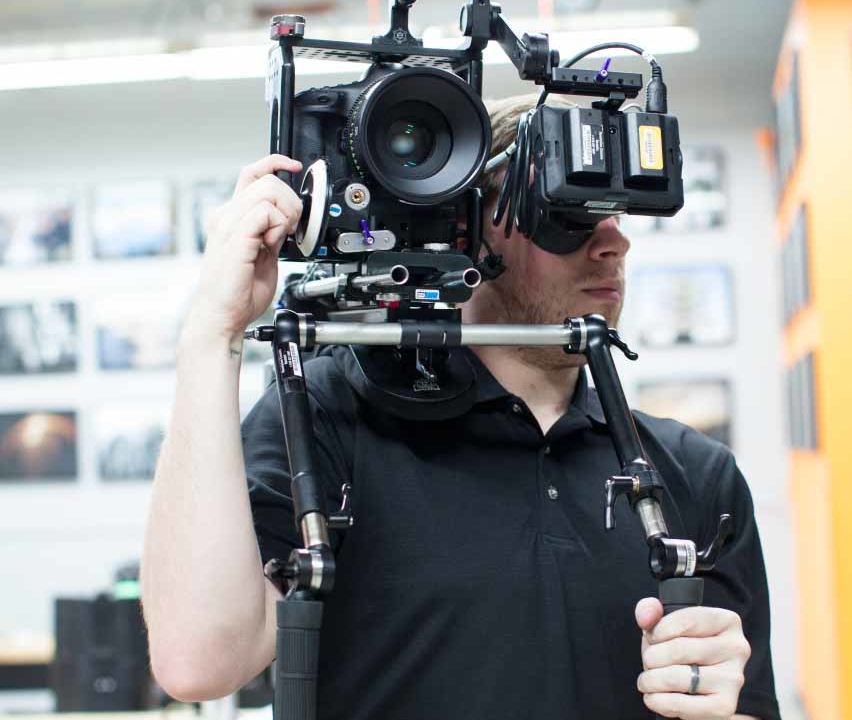
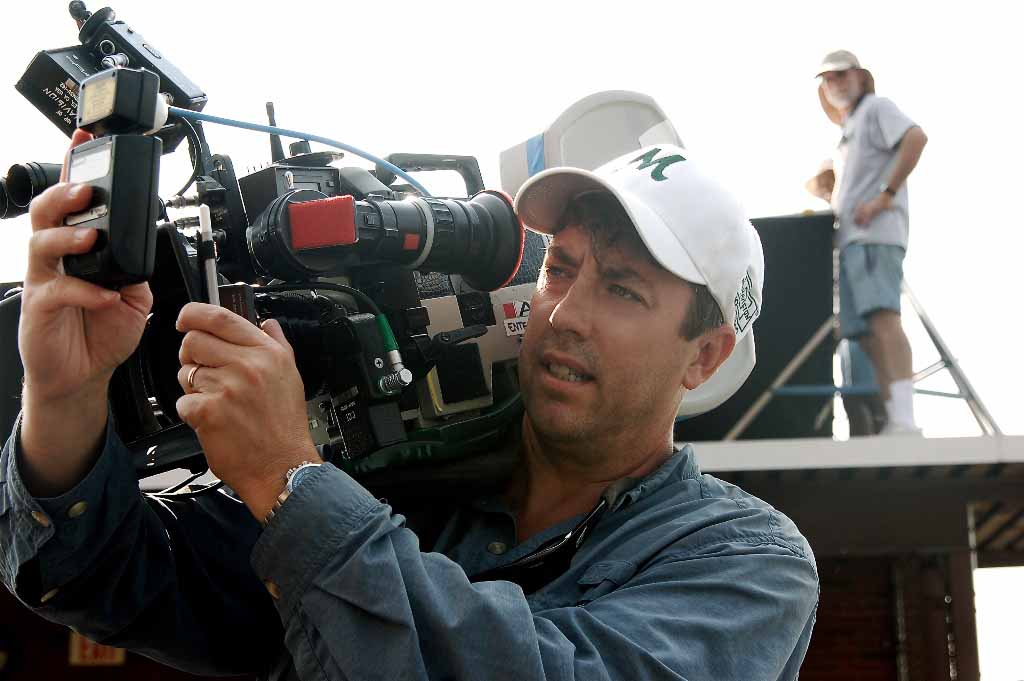

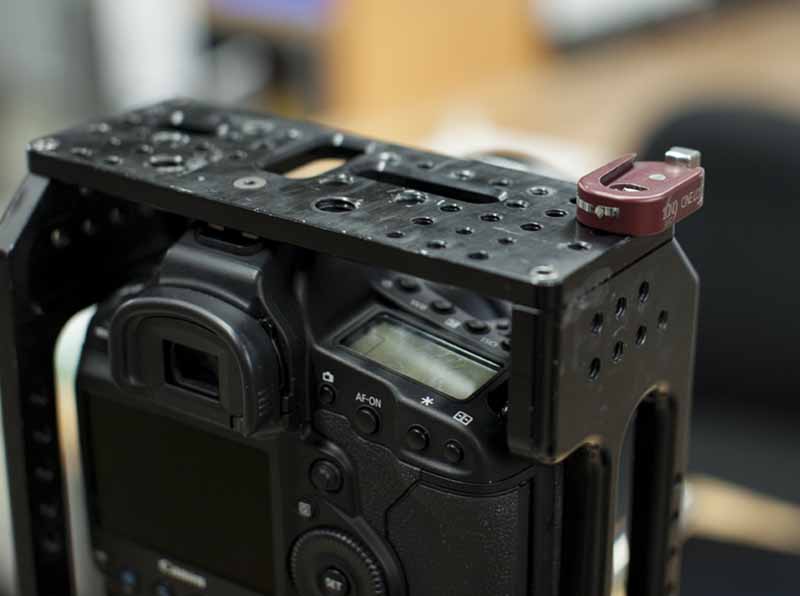

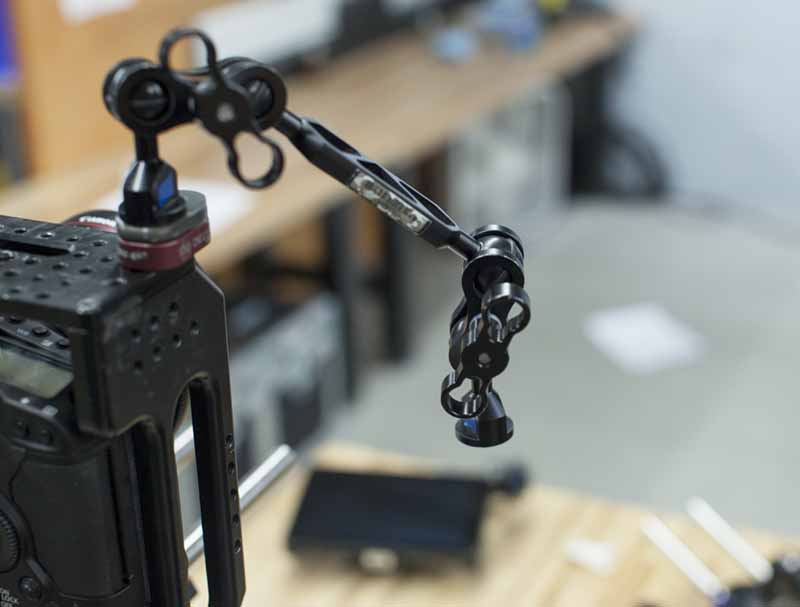




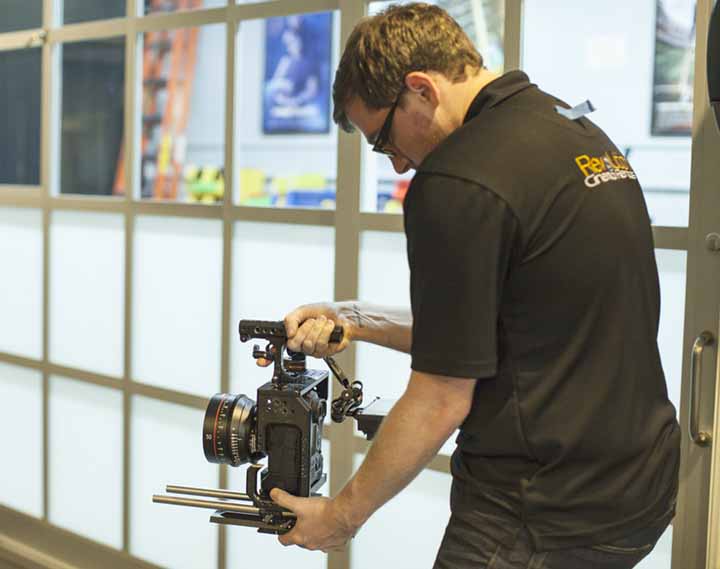
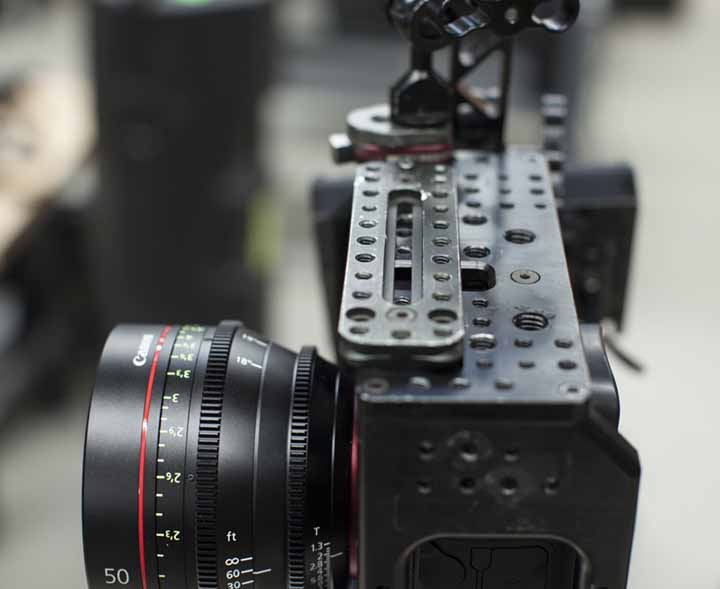


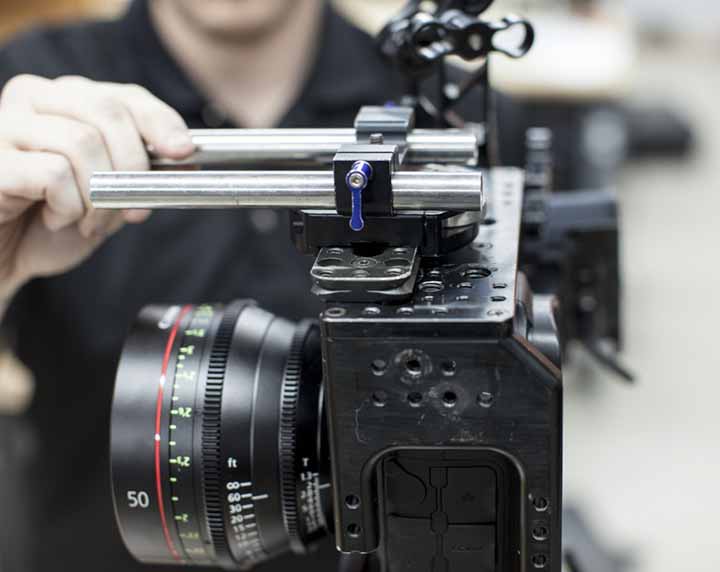



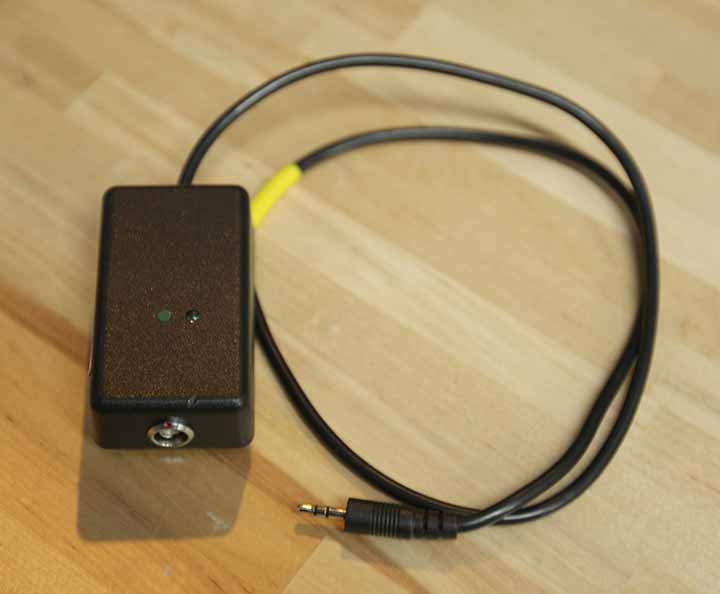
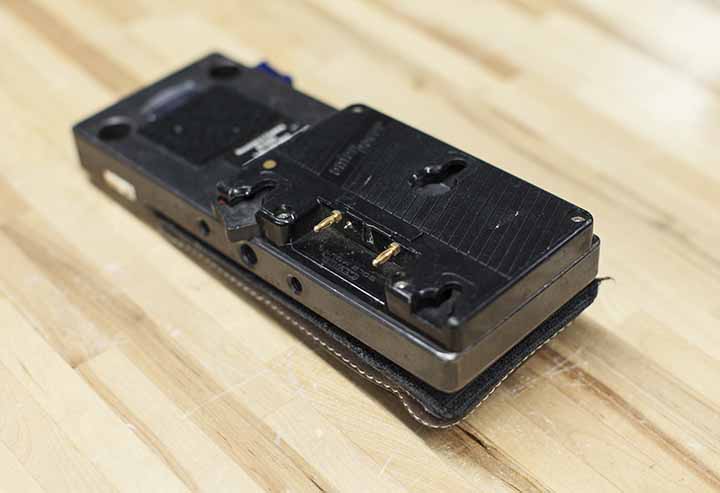


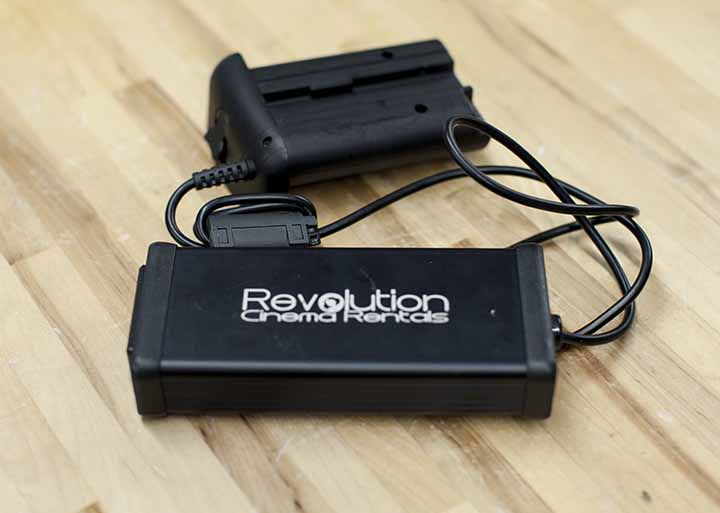
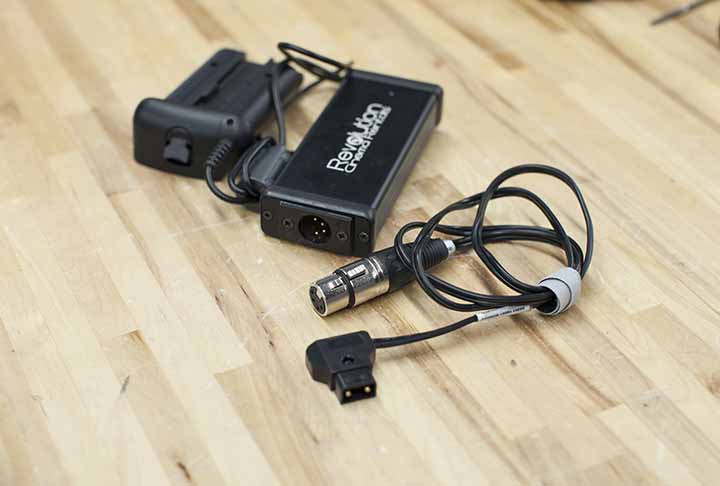
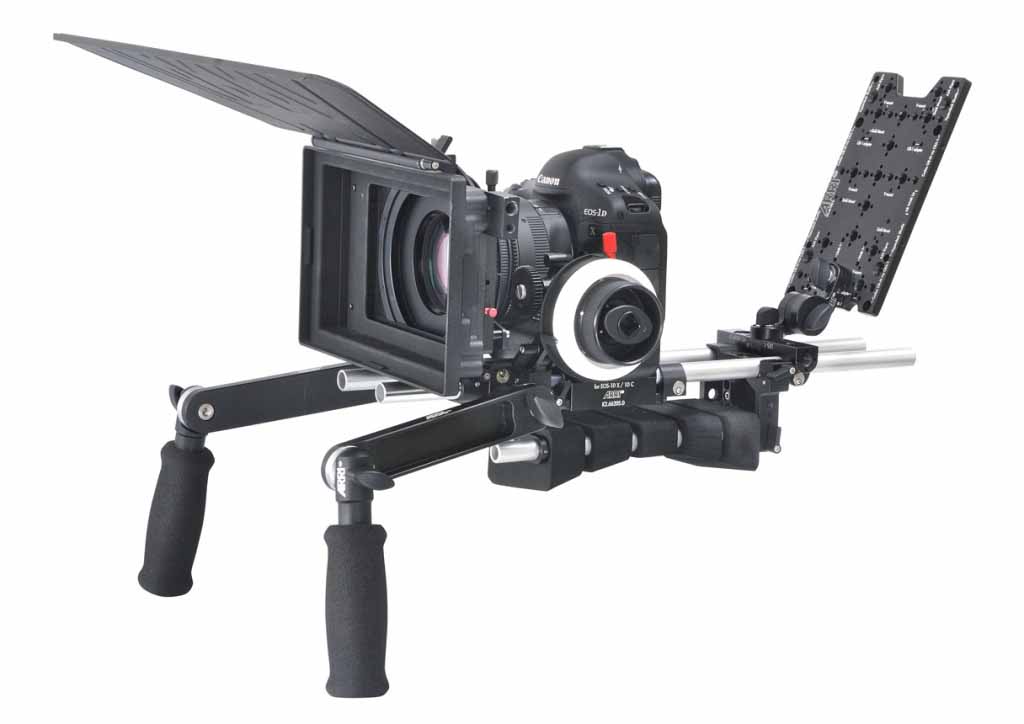


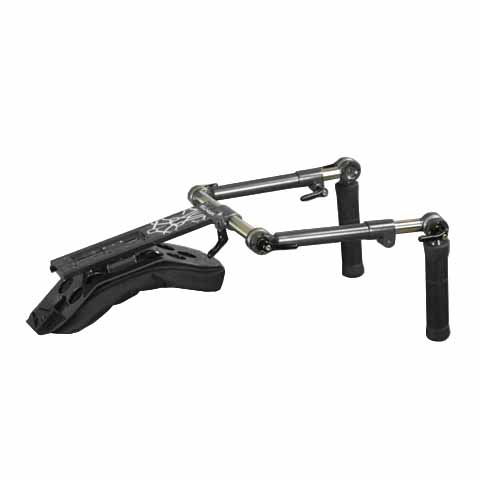




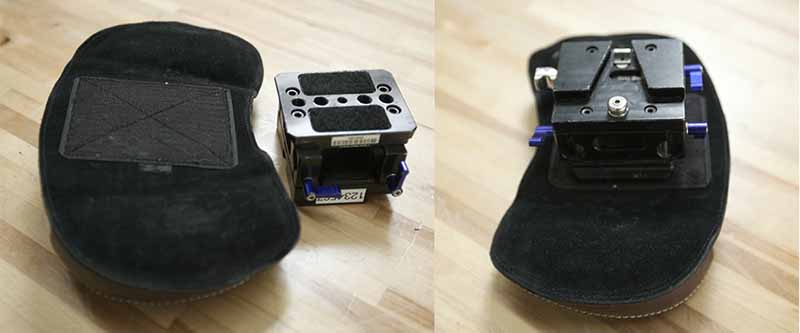

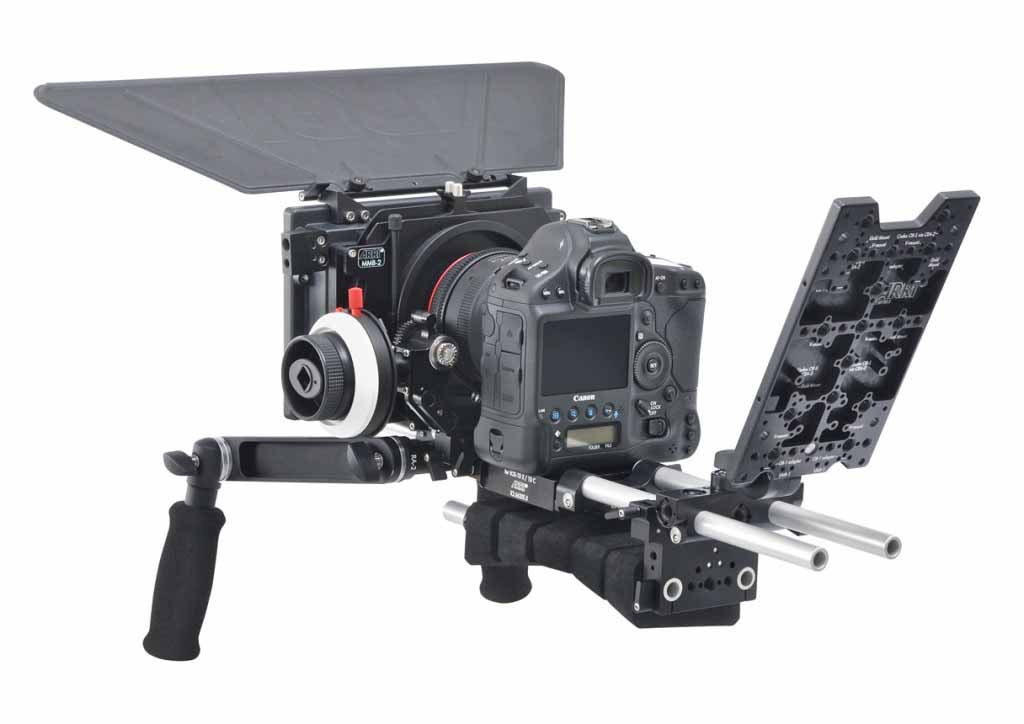


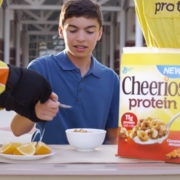


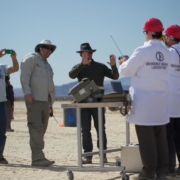
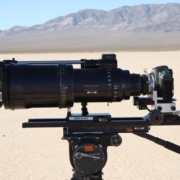


Who’s that sexy model?
Tyler, Some dude we pulled off the street and put the camera in his hands
Another great post Shane! Been waiting for this since the first part was posted. One question I’ve been meaning to ask is how often do you operate a camera while pulling focus yourself? I mostly work on my own, run and gun, and finally have the perfect set up with for my C100.
I would definitely embrace the opportunity to have some assistance with focusing and hope someday soon I am at that level. Thanks for sharing your insight, as always.
Daniel Mendoza, I hardly ever pull my own focus. Only when I cannot get a focus puller in a car or a tight space. Back in the day on music vids, I would pull my own focus to get that effect of coming in and out, grab ass type of approach. That sounds like a good set up with your C100. I like that camera. I feel it is the 5D MK III killer.
Love the Revolution power adapter. Letus had something similar, a Canon LP-E4 to D-tap adapter (LT-LPE4-DTAP) but apparently had supply issues and it has been on permanent “not in stock” status.
In regards to other rigs I have to say I love my Wooden Camera 1DC rig. Their DSLR cage is modular and adapts to smaller DSLR’s, those with battery grips and taller camera’s like the 1DC. Lots of options for EVF mounts, rods, shoulder rigs, many all working off a standard Arri dove plate design.
Shane, your blog is one of my regular go-to pages and I always look forward to anything you want to share. For someone who works mostly in a small market where we often don’t have the time or budget for all the production bells and whistles it’s refreshing to learn about them from a industry professional. We all know it’s not easy working a real job, balancing professional and personal responsibilities and finding the time to help others, very much appreciated.
Craig Meadows, thank you for sharing. Wooden camera makes great quality products. I am glad you are loving your set up. You are very welcome and thank you for your kind words. It does take a lot of time and energy to keep this thing running. I am not a blogger, I am Director of Photography and an educator. Many of my colleagues choose to do this at the end of their careers. My wife and I are bucking this approach and giving back when I am at the top of my game. Thank you for your support
Can you go more in depth with the power options. I New to having external power. I need to power a monitor, camera, and wireless follow focus. Gear is, MicroRemote, SmallHD AC7, BlackMagic CC. Thanks!
Aniwat Pluemjit, we use Anton Bauer HCX batteries with P-tap breakouts. You can easily power all of those devices off of one of the HCX batteries. Letus makes this great Gold Plate to power all of these devices without having to use a p-tap breakout. http://www.letus35.com/store/Letus-Anton-Bauer-Gold-Mount-Plate.html The Revolution power source will power your camera for a long time, but that is all it does, you will need this gold plate set up to do all the others.
Can you help me understand why, with so many great cinema cameras out now, DP’s are still using dslrs? I understand they were marketed for the low budget, indie filmmakers but when money is no issue why would you not use a camera actually made for video (not stills) with a much better image. I know there is no one camera for every job but there are so many cameras better than the best dslr. It takes so many accessories just to get up to the level of a basic video camera. It was a fad, WHY are we still using them???
Patrick, that is a great question and you answered it in your statement. I know there is no one camera for every job. The 1DC fits a small void in being able to put the larger, heavier high end, more professional cameras in places. On Need for Speed space was a huge commodity in the super cars. Even the C500 which is much lighter and smaller than the Red Epic would not fit where the 1DC could. Also our Helmet Cam was a 1DC which was mounted to the stunt drivers head to capture that feeling of you in the driver seat. No other camera could have done this. With the crash camera dept. I did not want to constantly sacrifice 40-60K worth of cameras in dangerous places. So we chose the 1DC as our crash camera with L series glass to get pummeled. Hope this clarifies. I use the best aspect of each camera to help tell my stories, not one is a plug and play all.
Hi,
your blog is very informative. Thanks. I totally loved the camerawork in ACT OF VALOR. I wish to know, which lenses did you use in the film? And why? I have Canon 5D MARK II, and I mostly shoot tv dramas. Any advice?
Samora, I shot 85% of Act of Valor with Panavision Primo primes with a Panavision Lens mount to EOS adapter, you cannot buy these lenses only rent them. The other 10% was shot on the Zeiss ZF Still Glass and the final 5% was on Canon L Series still glass. New Canon Cinema Primes, Zeiss CP2’s.
I have invested in a 1DC and a C300 and would like to have as close a set up to this as possible. I am not sure I understand all of the instructions. I am going to try but are there any video tutorials or someone I can pay to walk me through it. Not even kidding, this would really help for the documentary I am shooting.
Kareem Manuel, that is a great suggestion, We will look into it and see if we can make this happen.